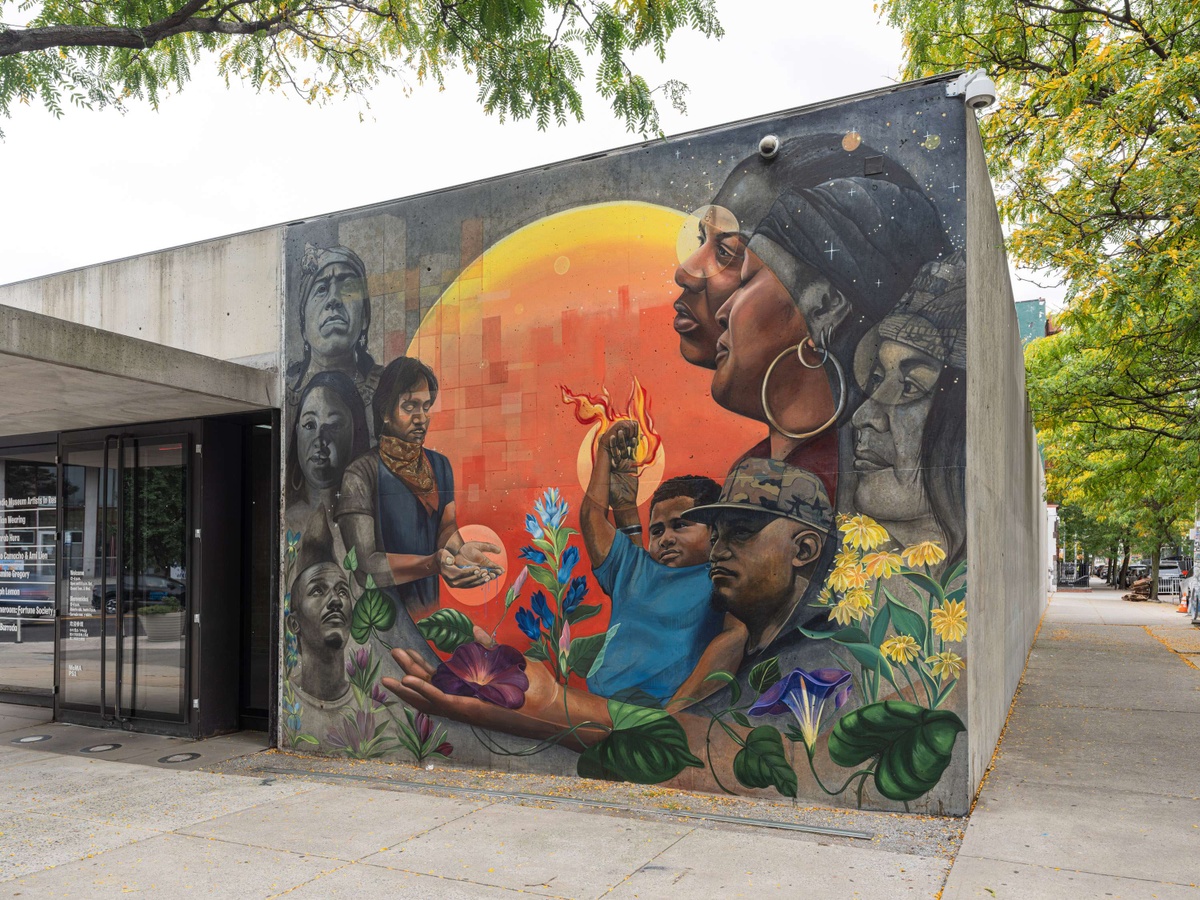
After the Fire is a participatory mural project by artists Nanibah Chacon, Tatyana Fazlalizadeh, and Layqa Nuna Yawar.
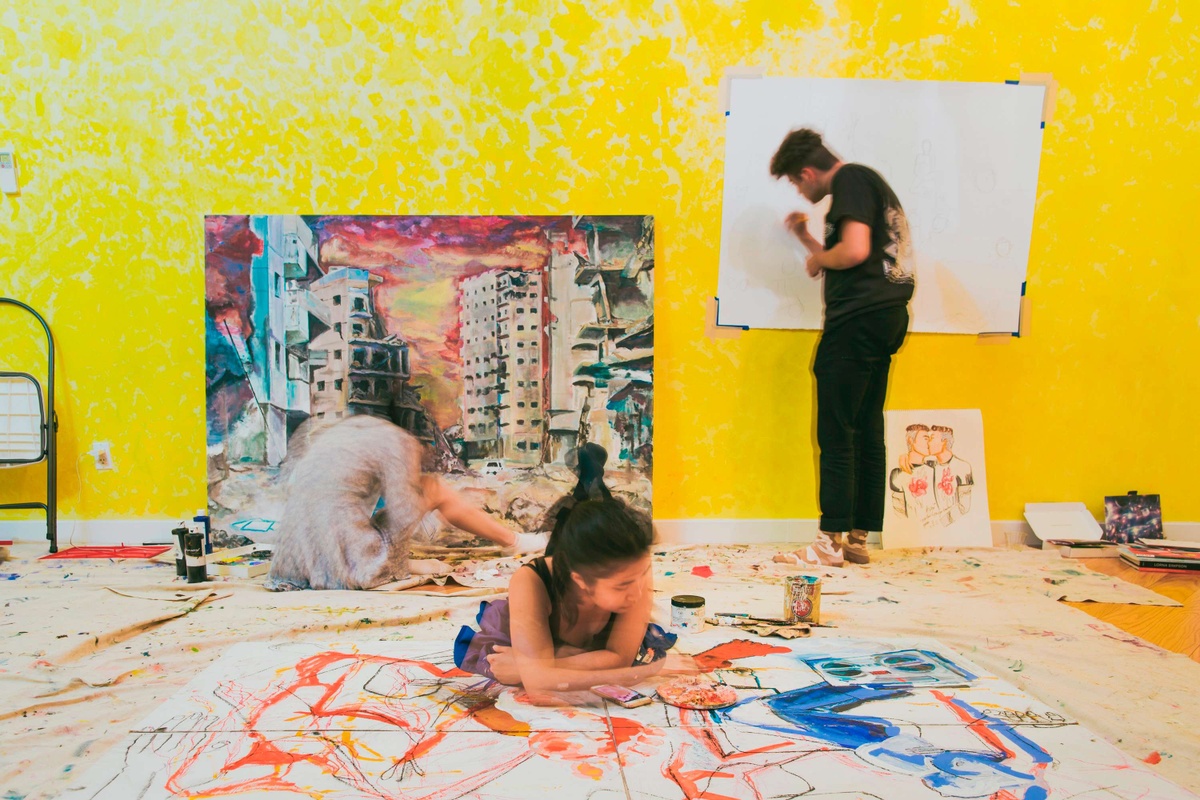
This fall, MoMA PS1 hosts a presentation in Homeroom of artworks made by ten alumni of Teen Art Salon, a Long Island City-based organization that provides resources and visibility to early-career artists ages 11 to 19. Continuing the organization’s relationship with PS1, Teen Art Salon: A Protospective includes a collection of sketchbooks and works on paper that grapple with the revelry and hurdles of adolescence. Bringing together new artwork and a selection of works produced over the past decade by teenagers—materials that are often infantilized as “juvenilia”—the presentation underscores the role of young people as both spectators and arbiters of visual culture, archiving a coming-of-age story in real time.

In the fifth iteration of a multiyear collaboration with The Museum of Modern Art and MoMA PS1, the Studio Museum in Harlem presents its annual Artist-in-Residence exhibition at MoMA PS1. And ever an edge: Studio Museum Artists in Residence 2022–23 features new work by the 2022–23 cohort of the Studio Museum’s foundational residency program: artists Jeffrey Meris (b. 1991, Haiti), Devin N. Morris (b. 1986, Baltimore, MD), and Charisse Pearlina Weston (b. 1988, Houston, TX).
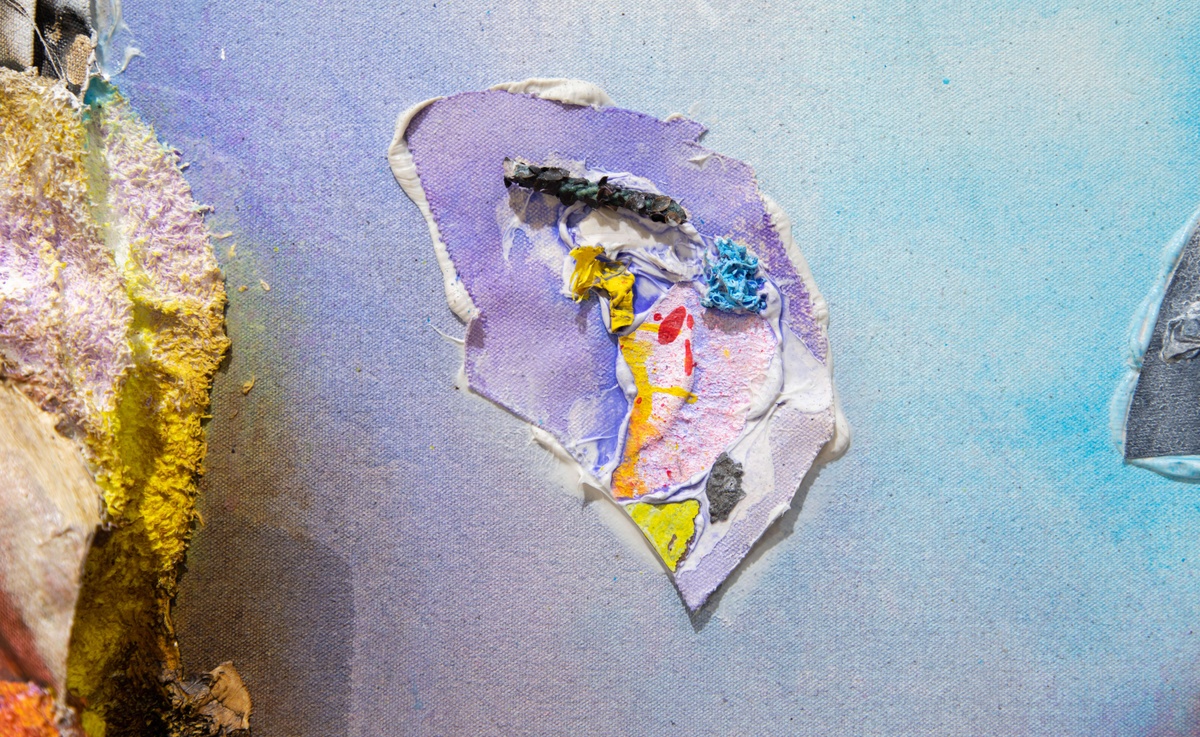
MoMA PS1 presents Leslie Martinez’s (b. 1985, McAllen, Texas) first New York museum exhibition. Martinez, who lived in New York City for fifteen years before returning to Texas in 2019, exhibits their largest body of work to date, which features recent paintings and three newly commissioned large-scale artworks. Using a cosmic palette based on the CMYK (Cyan, Magenta, Yellow, and Black) color model, the artist sprays and stains canvases with diluted paint, and then folds, pools, and collages materials onto the surface—including rags and dried acrylics.
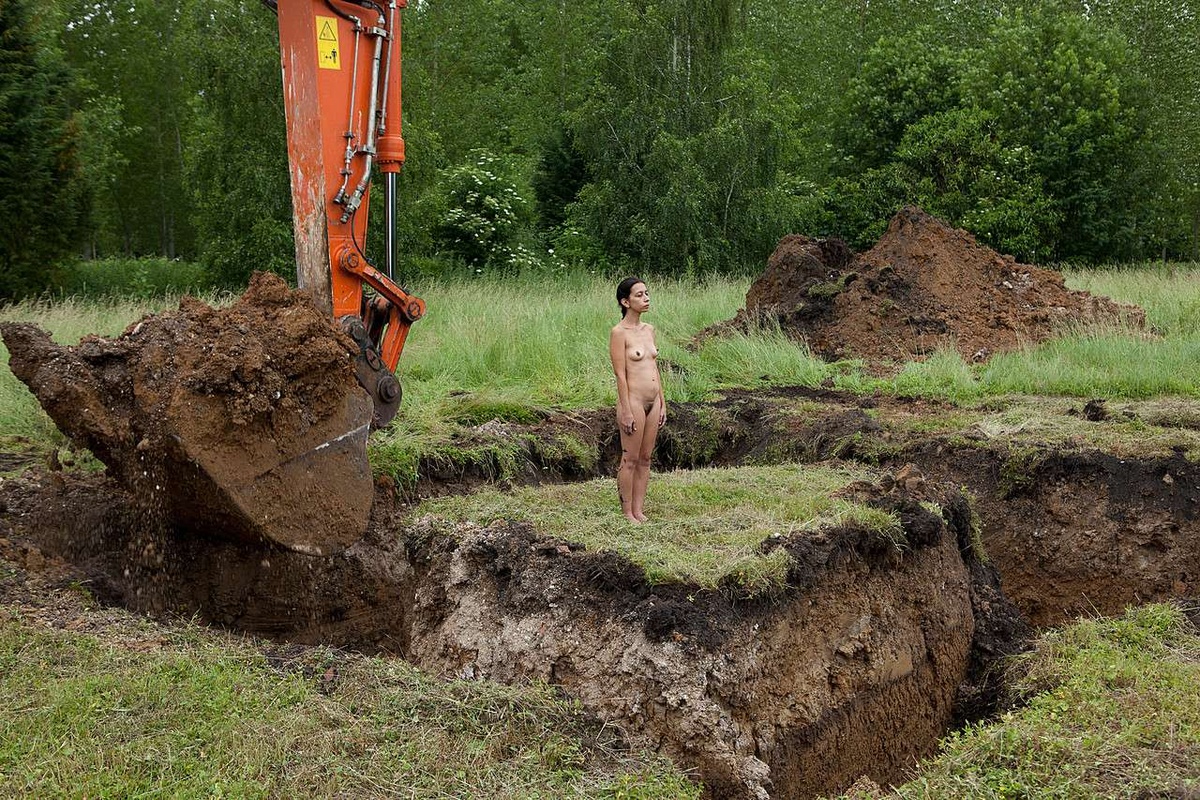
Exhibited for the first time since entering the collection of The Museum of Modern Art, Regina José Galindo’s Tierra (2013) explores connections between the exploitation of labor, resources, and human life in Guatemala.
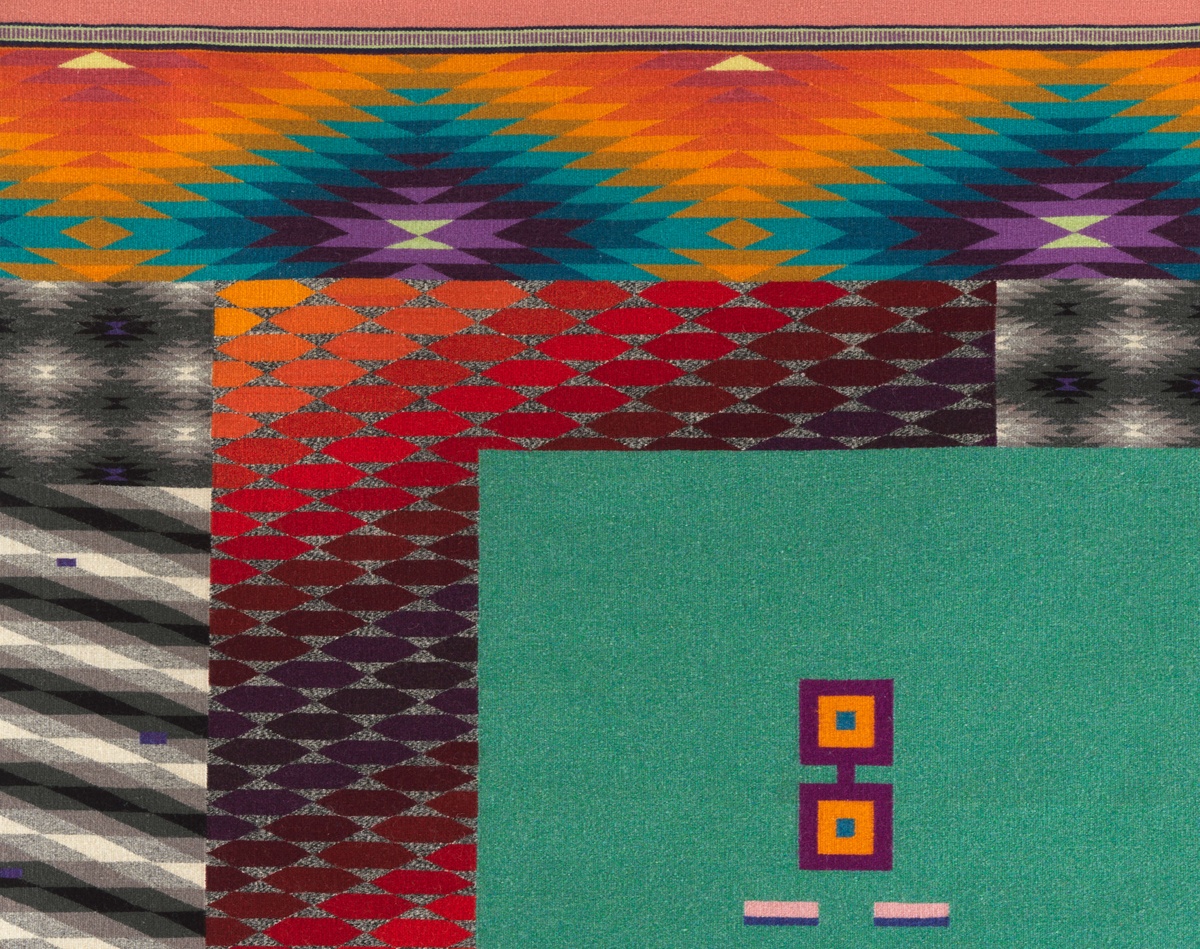
The first major solo museum presentation of fourth-generation Navajo weaver Melissa Cody (b. 1983, No Water Mesa, Arizona) spans the last decade of her practice, showcasing over 30 weavings that include three major new works produced for the exhibition. Using long-established weaving techniques and incorporating new digital technologies, Cody assembles and reimagines popular patterns into sophisticated geometric overlays, incorporating atypical dyes and fibers.
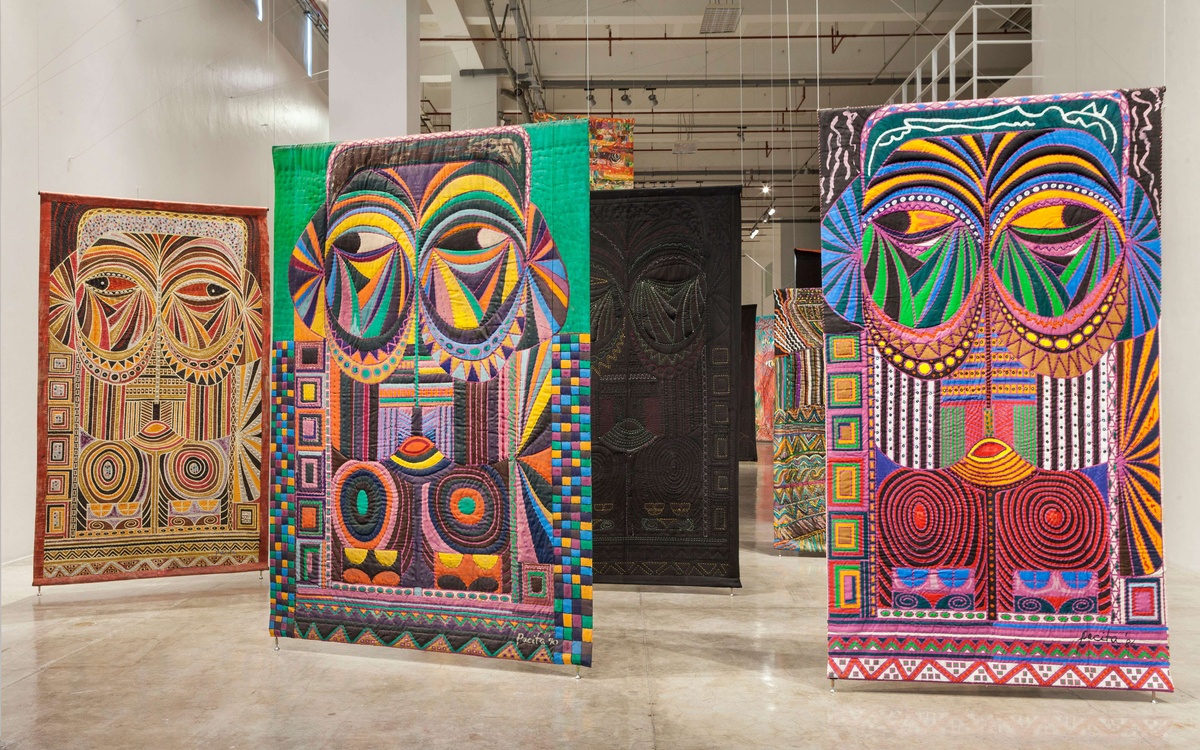
This spring, MoMA PS1 presents the first retrospective of artist Pacita Abad (Filipina-American, 1946–2004). Spanning the artist’s 32-year career, the exhibition includes more than 50 works—most of which have never been on public view in the United States prior to this exhibition.
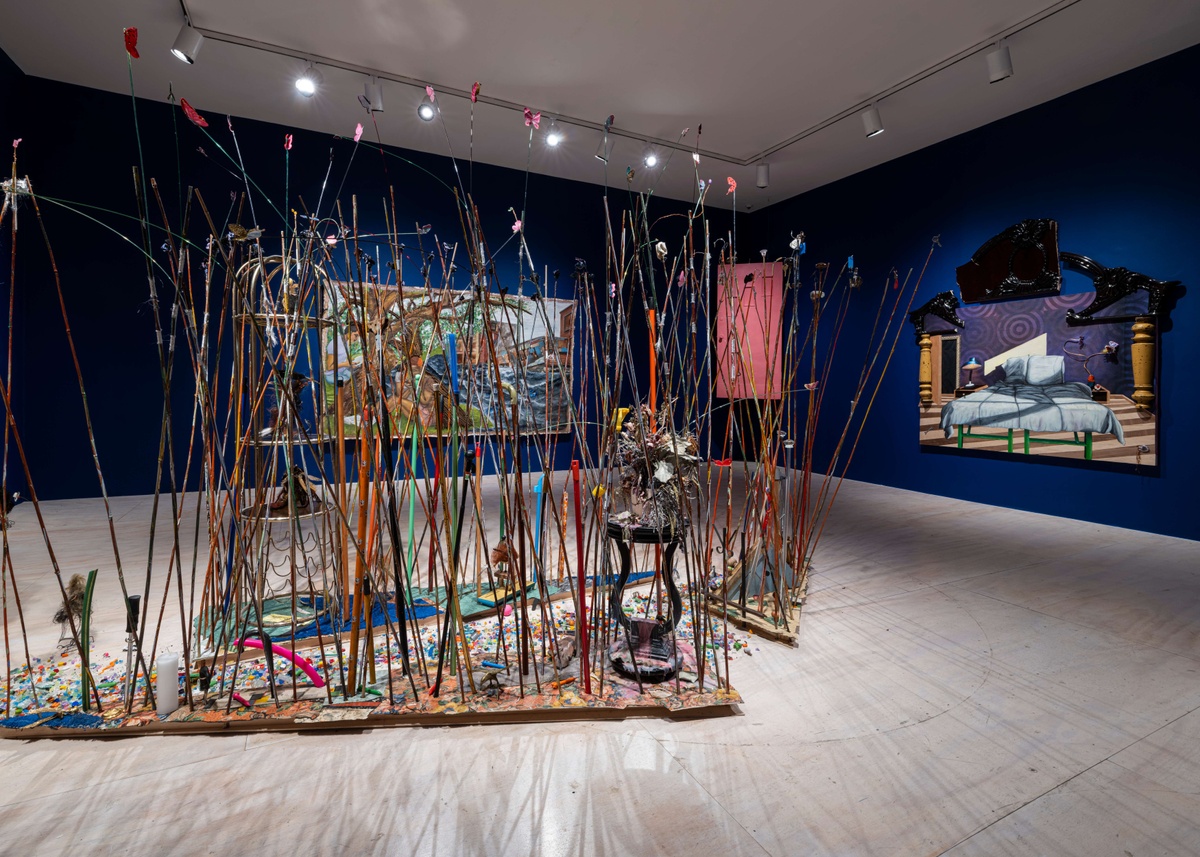
Visit Devin N. Morris’s gallery in And ever an edge: Studio Museum Artists in Residence 2022–23 for a special listening experience organized by the artist. Recorded readings by Morris, Elliott Jerome Brown Jr., Parisa Esfahani, Clifford Prince King, and J Wortham play on a loop in the gallery. Building on the poetics of form, landscape, and material in Morris’s multimedia works on view, this soundscape offers a moment of stillness and an opportunity to gather and listen.
Past
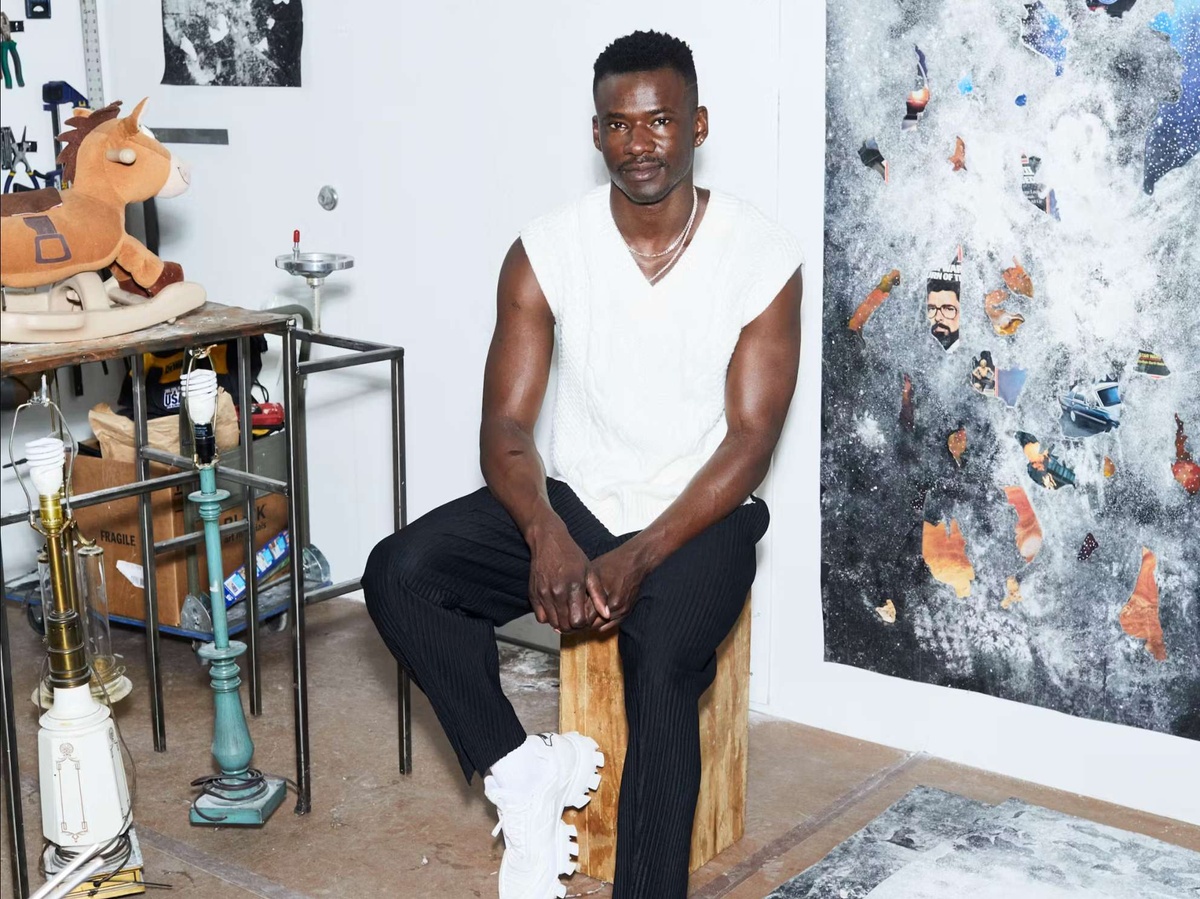
Join 2022–23 Studio Museum artist in residence Jeffrey Meris for a conversation with Tomashi Jackson and Alexandria Smith.
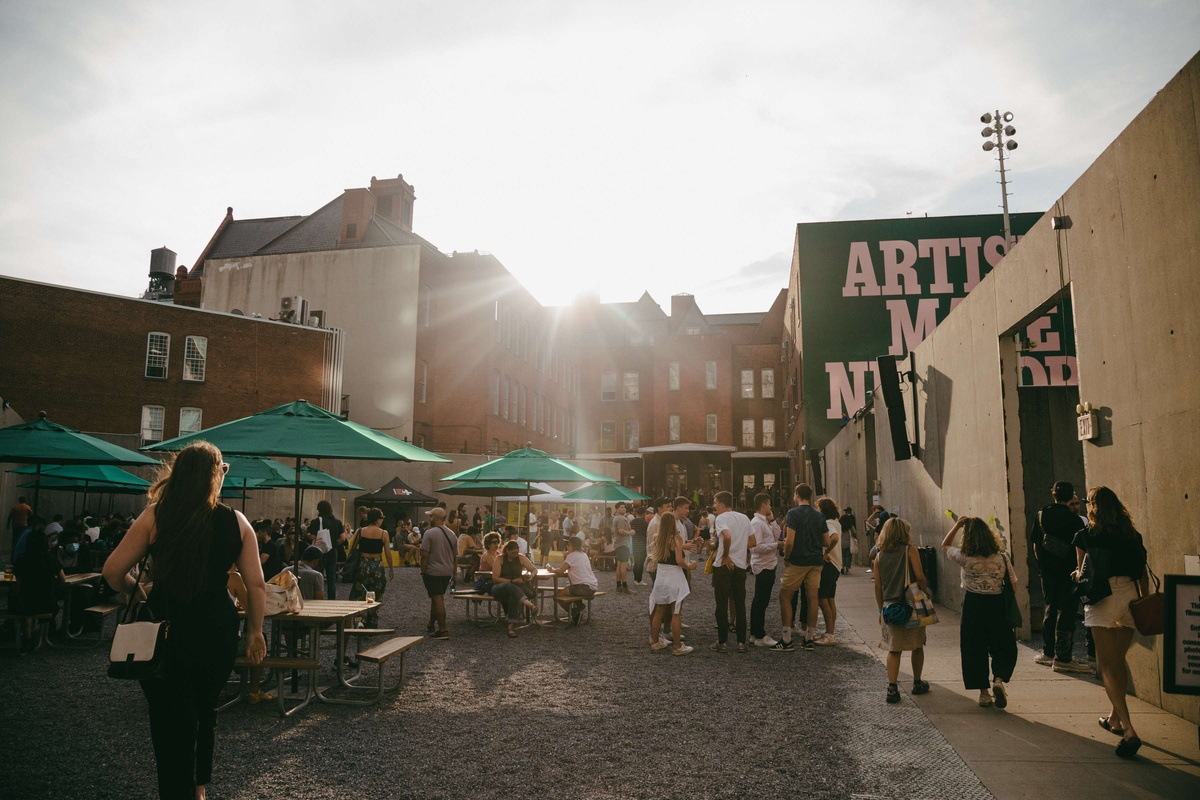
Join us to celebrate three new exhibitions at an Open House featuring talks, readings, and workshops from artists and curators. The entire day is free and open to the public.
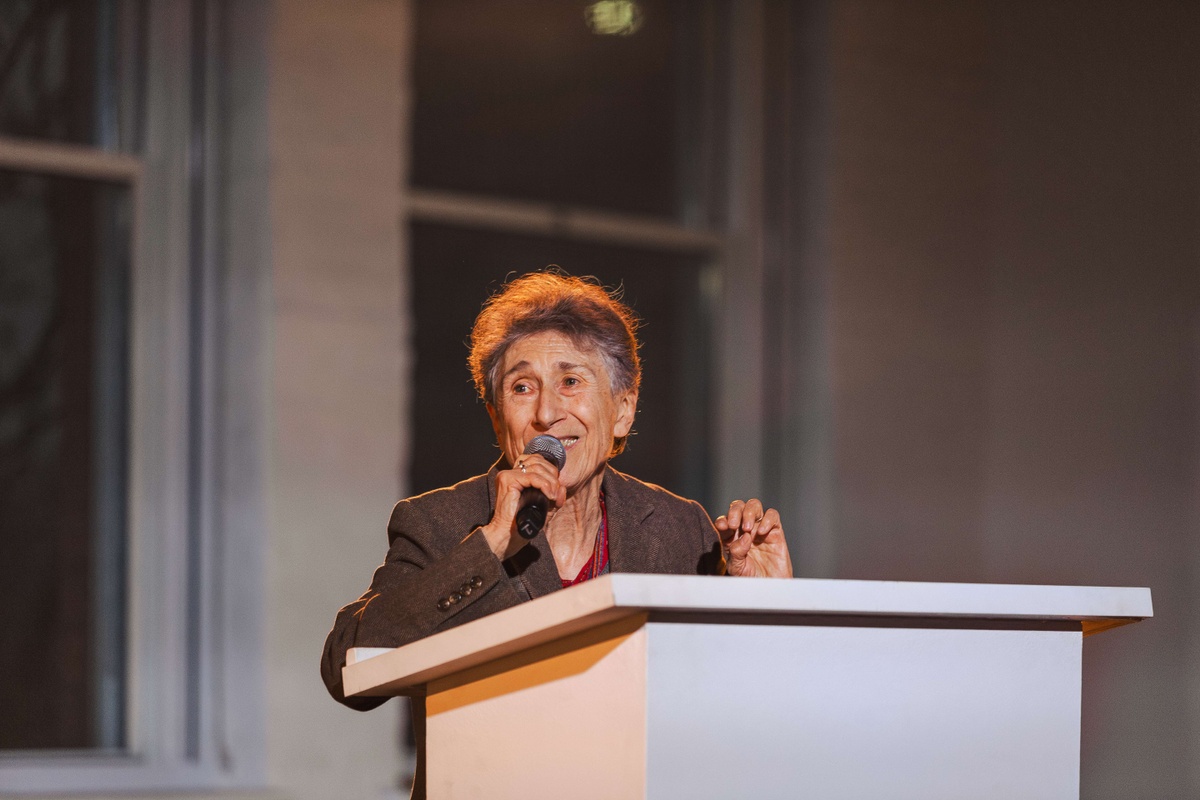
Join us for a lecture by renowned scholar and activist Silvia Federici on the connections between war, social reproduction, and ongoing anti-capitalist feminist struggle. The presentation builds on Federici’s decades-long research in political philosophy, feminist theory, cultural studies, and economics. Free and open to the public, this talk will explore critical concepts that continue to inform contemporary art discourse.